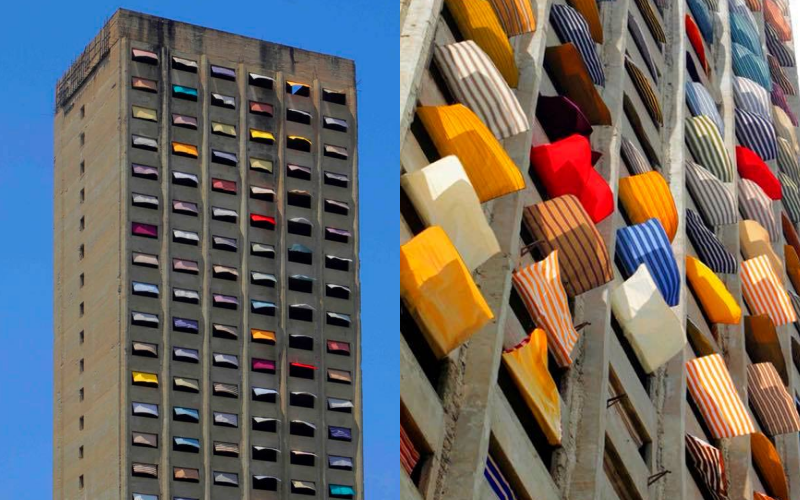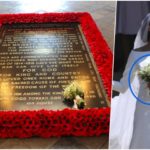Burj el Murr, also known as the “Tower of Bitterness”, is an abandoned and unfinished 40-story tower in Beirut. Its construction started around 1974, one year before the Lebanese Civil War began—a violent period in the country’s history that lasted for 15 years.
Originally intended to be a hotel or an office space, the tower became a notorious sniper hideout during the civil war. Four decades later, the tower, with all its bullet holes and craters, remains a sad reminder of the tragic events that left around 120,000 citizens dead and thousands others displaced.
Lebanese artist Jad El Khoury decided to do something about it and transform the “Tower of Bitterness” into a colorful installation art. He placed colorful, rectangular pieces of cloth in each window of the building, giving it a touch of life.
“Burj el Murr is now dancing with the wind!” he said.
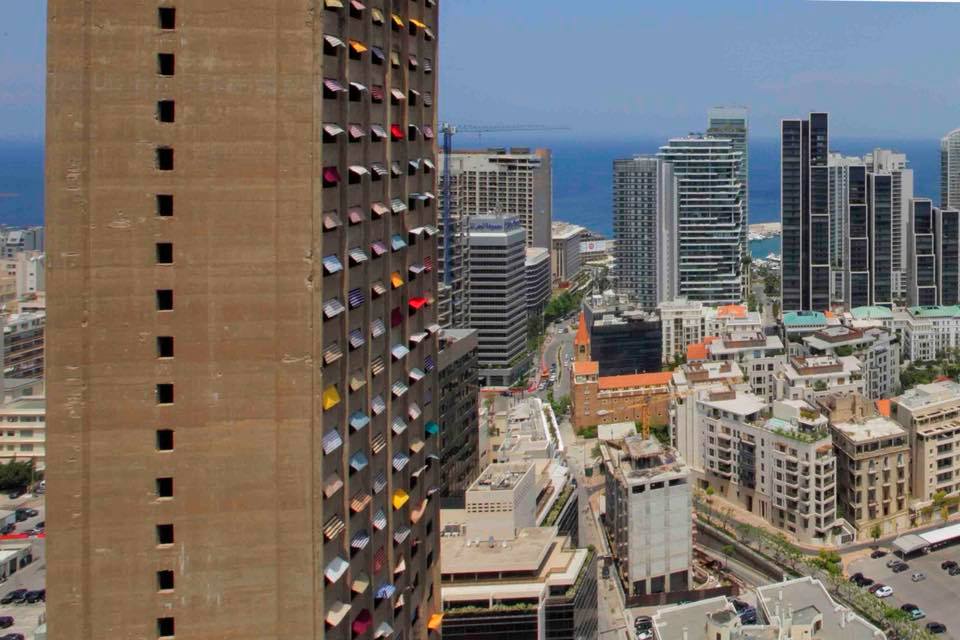
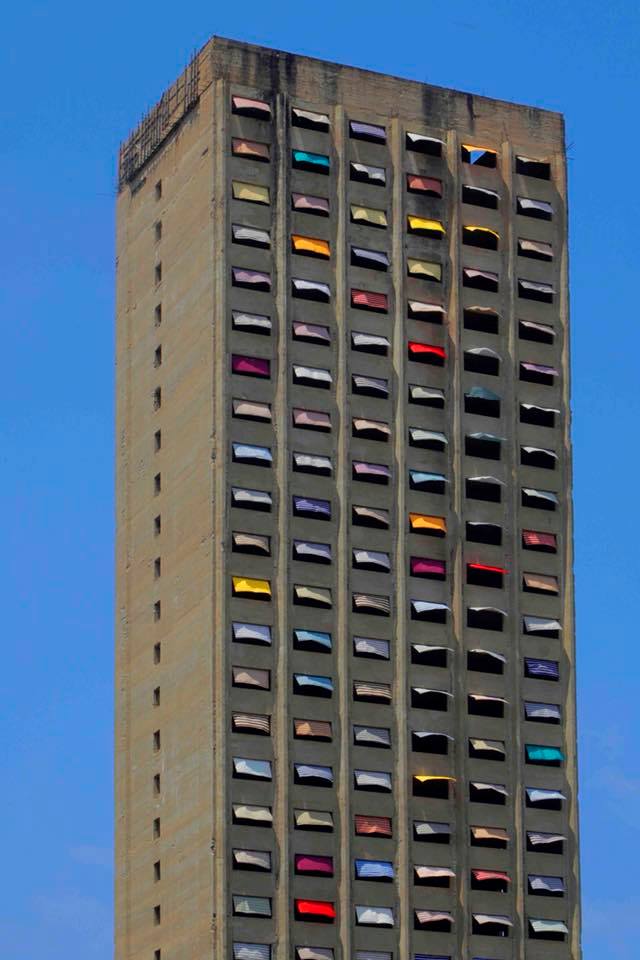
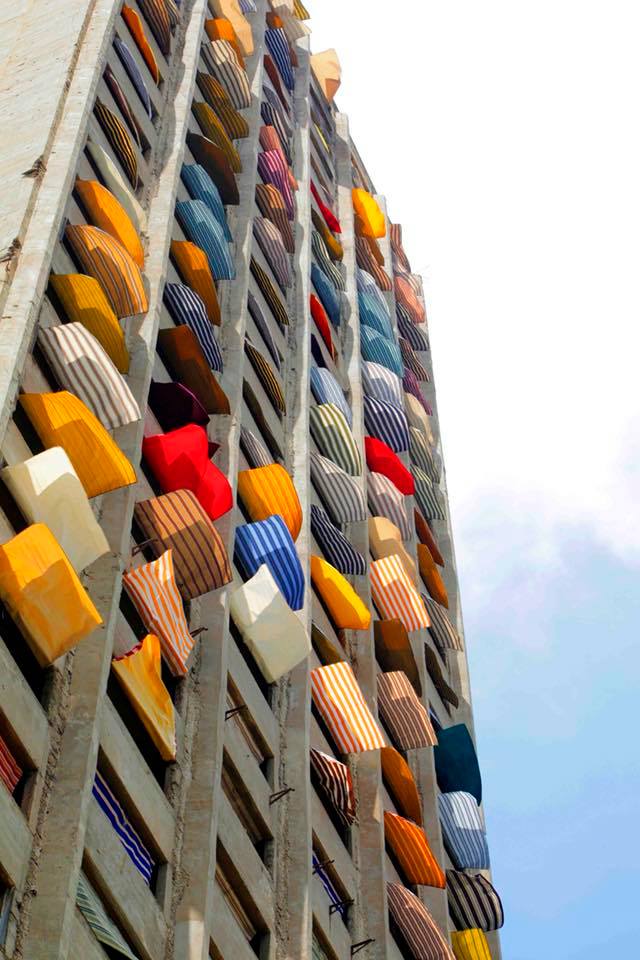
Khoury has also done other street and installation art pieces in Beirut before working on the Burj El Murr. For one project, he scaled a 22-story building to highlight war traces by transforming each bullet hole into a Potato Nose character. Potato Nose is one of his most recognizable doodle art images.
https://www.instagram.com/p/BbEQp_ahWX4/?taken-by=potatonose1988
In an interview with Bazaar, Khoury explained why he chooses to use the war-torn buildings of his hometown as his canvas:
“People used to pass by those scarred buildings everyday, without a second glance. They became normal, part of the scenery. They needed to be highlighted to bring up some big questions: What should we do with these iconic monuments that are still standing since the end of the civil war in Lebanon? Should they be preserved? Demolished? Restored?”
After he shared photos of his recent installation art on social media, people expressed their appreciation for the project.
“Brilliant!! I have always hated this building because it is the saddest piece of concrete in Beirut. Now I can look up and smile. Thank you,” one Instagram user commented.
“Beautiful! You did an amazing job transforming something dark and sad into something colorful… you added life to it,” said another.
Winner of the 2017 Arte Laguna Prize and the 2017 Biafarin Honor Award, Jad El Khoury continues to live and work in Lebanon as a street artist and interior designer.
Read more from InqPOP!:
Graffiti and copyright: Why big brands can’t just use street artists’ work without consent
Tourists deface at least 100 bamboo trees in Kyoto’s famous Arashiyama Bamboo Grove
A Tokyo skyscraper sign gives an eerie illustration of the height of 3/11 tsunami
Loving grandpa paints for grandkids everyday despite living countries apart
Pinoy artist draws anime-like scenes with background inspired from places in Manila
Illustrator uses fruits and veggies to design cute characters

